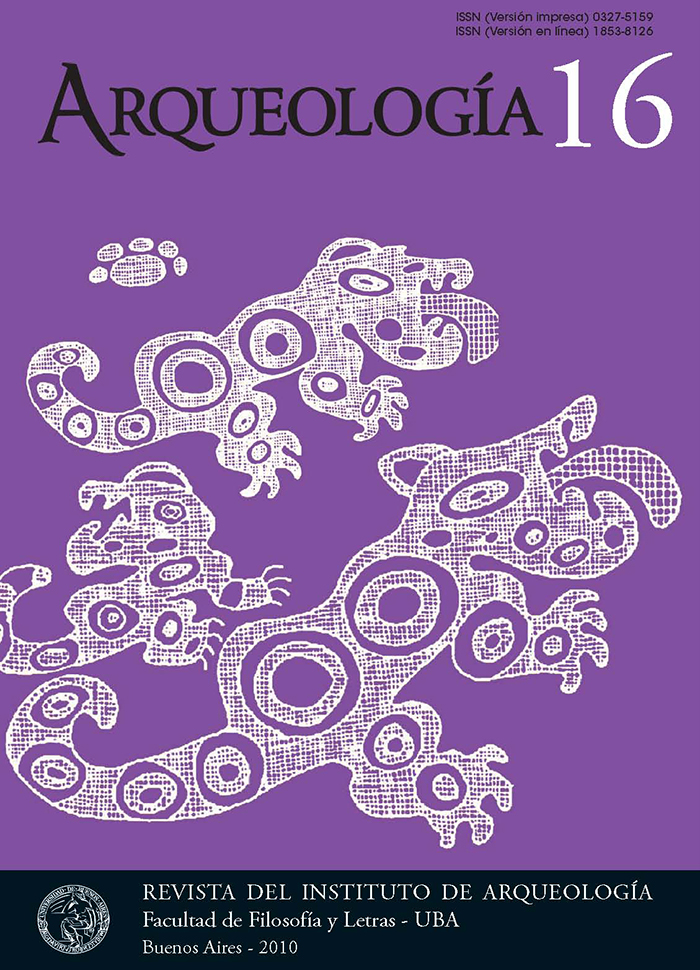Patrones de trozamiento en contextos Hispano Criollos de fines del siglo XVIII y principios del XIX
Palabras clave:
Evidencia Documental y Arqueológica, Contextos Hispano-Criollos, Patrones de Trozamiento
Resumen
En este trabajo nos proponemos comenzar a discutir la particularidad de los patrones de trozamiento de distintos animales en contextos coloniales hispano-criollos de fines del siglo XVIII y principios del XIX. El punto de partida es un análisis del modo en que se definían las unidades de obtención o adquisición y las unidades de preparación y cocción de los distintos taxones en diversas fuentes contemporáneas -libros de cocina y relatos de viajeros, entre otras. A partir de esta información derivamos expectativas en cuanto a patrones de presencia de unidades anatómicas y de marcas y fracturas para contextos arqueológicos hispano-criollos y las contrastamos con la evidencia arqueofaunística obtenida en el sitio arqueológico de Floridablanca. En esta colonia española, habitada entre 1780 y 1784 en la costa de la actual provincia de Santa Cruz, se utilizaron y consumieron tanto ungulados domésticos -Bos taurus y Sus scrofa- como especies locales -principalmente Lama guanicoe. El contraste de ambos tipos de evidencia -documental y arqueológica- nos permite acercarnos a la valoración y el uso de las diferentes unidades anatómicas de cada taxón en las prácticas alimenticias hispano-criollas del período histórico estudiado.Descargas
La descarga de datos todavía no está disponible.
Cómo citar
Marschoff, M., Bosoni, C., & Starópoli, L. (1). Patrones de trozamiento en contextos Hispano Criollos de fines del siglo XVIII y principios del XIX. Arqueología, 16(1), 209-229. https://doi.org/10.34096/arqueologia.t16.n1.1736
Número
Sección
Artículos
Los autores/as que publiquen en esta revista aceptan las siguientes condiciones:
- Los autores/as conservan los derechos de autor y ceden a la revista el derecho de la primera publicación, con el trabajo registrado mediante Licencia Creative Commons 4.0 Internacional (CC-BY-NC-SA), que permite a terceros utilizar lo publicado siempre que mencionen la autoría del trabajo y a la primera publicación en esta revista.
- Los autores/as pueden realizar otros acuerdos contractuales independientes y adicionales para la distribución no exclusiva de la versión del artículo publicado en esta revista (p.e. incluirlo en un repositorio institucional o publicarlo en un libro) siempre que indiquen claramente que el trabajo se publicó por primera vez en esta revista.
- Se permite y recomienda a los autores/as a publicar su trabajo en Internet (p.e. en sus sitios web personales o en depósitos institucionales), tanto antes como después de su publicación en esta revista, siempre y cuando proporcionen información bibliográfica que acredite, si procede, su publicación en ella. De esta manera, pueden favorecerse intercambios productivos y a una mayor y más rápida difusión del trabajo publicado (vea The Effect of Open Access).



.png)

(1)13.png)






1.jpg)
1.png)
1.jpg)


13.png)
1.png)


(1)1.png)









